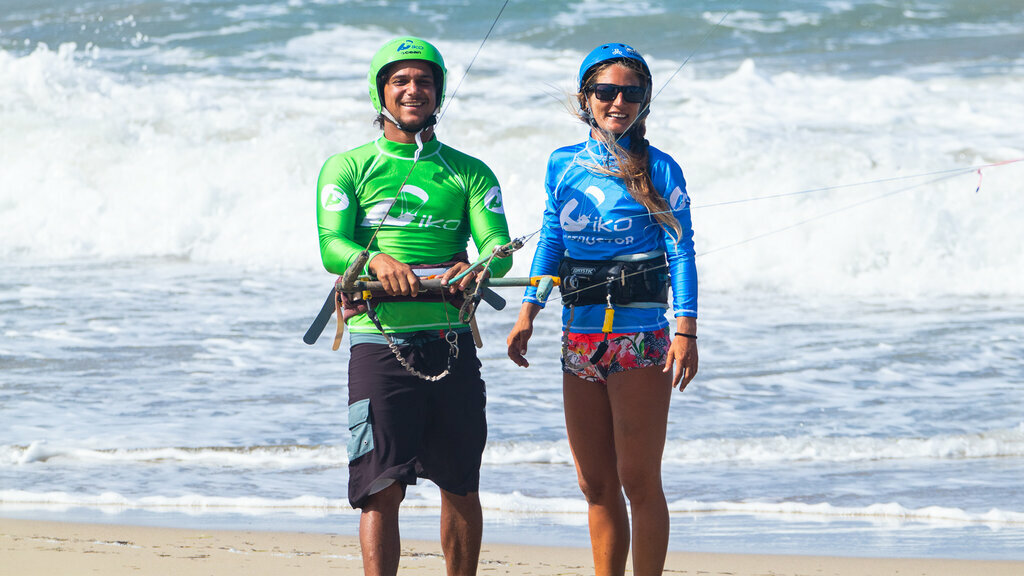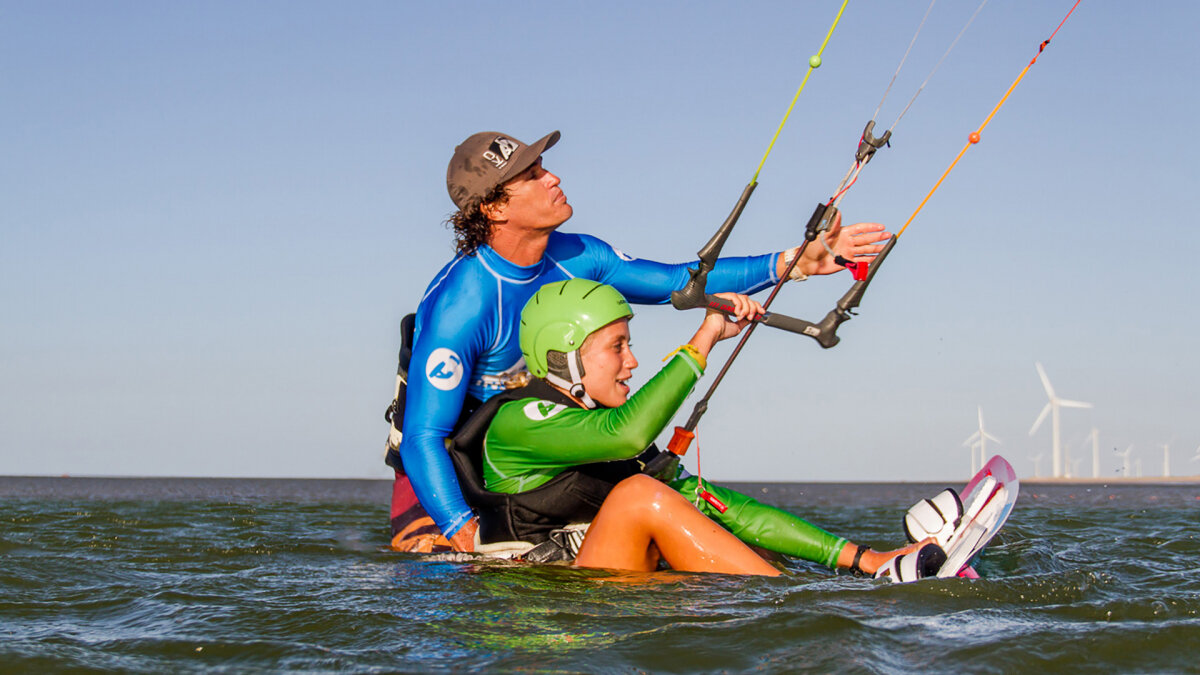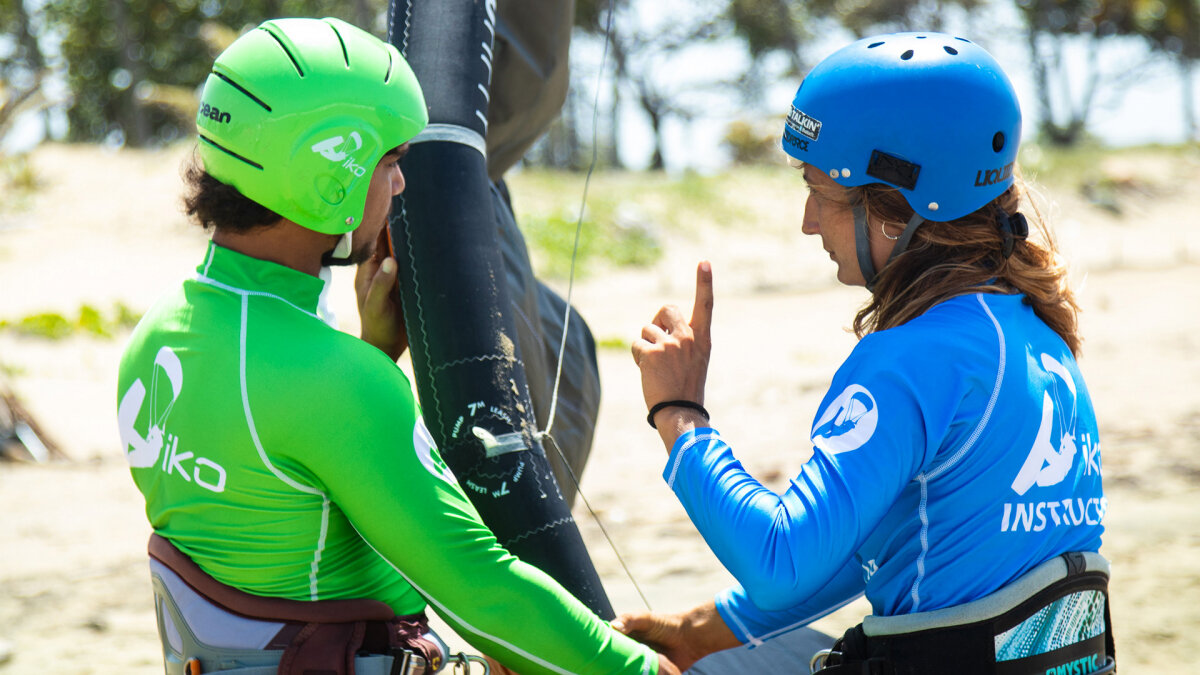Try the new IKO website at https://beta.ikointl.com/

Make the Most out of Your Kite Lessons: 12 Tips to Help You Prepare, Stay Focused and Learn Faster
Congratulations on taking the plunge! In this article, we will look at some tips that are designed to help speed up your learning curve and make the most out of your lessons. We hope you will find some useful ideas in this article that will help your kitesurfing learning experience
How to Better Prepare for Your Upcoming Kiteboarding Lessons?
The months, weeks or days leading up to your lessons is a time which is often overlooked, good preparation can maximise your learning experience..
1. Manage Your Expectations
Learning kiteboarding takes time and practice (same as any other sport or activity). Truth is, you might not get everything on the first try. Just like when learning an overhand serve in tennis – you’re going to hit the net sometimes. In those first flying lessons you will make some small mistakes, in those first waterstart lessons you might fall over – AND THAT'S FINE! Kitesurfing IS a water sport, so expect to fall in the water a few times (which is also half the fun of learning).
Making mistakes is actually part of the learning process, and your IKO Instructor is fully trained to help you learn from your mistakes and make sure your safety is the number one priority during all of your lessons.
2. Adopt a Positive Visualization
Visualization plays a big role, and it is part of the IKO teaching methodology to take some time to mentally visualize what you want to achieve before actually doing it. Positive visualization acts as a primer for the brain, making the actual act easier.
Picture yourself doing the thing that you want to achieve, this can be as little as 5 minutes per day before the start of your course, and this can have very positive results for you. I would personally suggest you take up to 30 minutes before starting your course to take time to relax and prepare mentally, minimize distractions, and get “in the zone”. Practicing visualisation techniques and meditative breathing can be very helpful.
3. What About Fitness, Strength and Flexibility?
Good news, you do NOT need to be an olympic athlete to learn kitesurfing. Kitesurfing is a low impact sport that relies mostly on the control of your equipment rather than any physical attributes.
That being said, kitesurfing remains a sport. Depending on the location of your IKO lessons, you may have to walk on the beach a lot, sometimes through waist deep water, and of course swim a bit (although soon the kite will do the job for you!). Improving your endurance and stamina slightly prior to your course can help get you through those 2 to 3 hours of lessons per day (and make the most of them!).
Having reasonable flexibility and range of motion can help you when practicing the waterstart technique. When you reach this level, it includes trying to put the board on your feet whilst balancing the kite above you with one hand. Being able to lift your knees up to your chest can make this step easier, but don’t worry, we have tips and advice for you if you can’t.
Having a moderate level of fitness will benefit you during your lessons. However, it must be said that following the right technique learnt from your IKO instructor, kitesurfing is accessible to people of all levels of fitness and strength.
4. Should I Be Watching Videos?
Yes! Videos can be very helpful for the aspiring kitesurfer, giving you an understanding of what to expect during your course. There are many videos and ebooks available to IKO Kiter Premium members which many people find beneficial, or you can download the IKO app and access the free ebook “Solutions to Kiteboard Better”.

What to Do During Your Kitesurfing Lessons to Boost Your Progression
What to do when it’s crunch time? Here are a few of my tips to help you during your lessons.
5. Communicate at All Times
When learning to kitesurf in the beginning stages there are various ideas that the instructor needs to explain for you to understand. This can be very important information which provides the foundation for you to build your skills upon. Do not be afraid to ask the instructor questions and make comments such as “I don't understand”, “What do you mean?” or “Can you repeat that please?”.
By asking questions when something is not clear, you will not only learn more information from your instructor, it also gives your instructor an idea where you are on the learning curve, so they can adapt their teaching accordingly.
6. Relax, You’re in Good Hands!
When flying the kite you have access to a lot of power, and remaining calm whilst in the midst of wind, water and other kiters can be a challenge in itself. You may feel a certain amount of anxiety during your course, if this happens you should tell your IKO instructor immediately.
Your IKO instructor is trained in this field and may suggest taking a small break or having a conversation. They will be there to reassure you and calm you down. It is not uncommon to feel tired after some time in the water, again - communicate this with your instructor, they will do the necessary.
7. Practice Patience
When learning any new sport, repetition and practice are huge factors. Practicing patience whilst learning kitesurfing can be helpful. It takes time! From learning basic kite flying skills to then combining those skills with a kiteboard takes practice.
By remaining patient during your learning process you will not only listen to the information from your instructor better, you will also enjoy the learning process a lot more, and it should be a fun experience! Being patient with your own progression will decrease the chances of getting frustrated which in turn should increase your success rate.
8. Hydration
In some instances you will be in a hot environment which increases perspiration, or wearing a wetsuit. This combined with physical activity means the chances of becoming dehydrated increase. Dehydration can lead to fatigue, cloudy thinking and uncomfortable sensations. What you eat and drink in the hours leading up to your course can play a big part in your performance.
9. Eyes on the Prize
Learning to kitesurf requires 100% of your attention, even after you have the flying skills required you still need mental awareness, constantly checking on your kite position, wind direction, and various other factors.
Trying to minimise distractions during your course can be very beneficial, and may help mental clarity. Your IKO instructor is there to help you maintain your focus and keep you motivated. Try to show up to your lessons with your mind rested and leave the stress behind!

What You Can Do After Your Lessons to Retain Your New Skills
The time after your lessons is also often overlooked! You’ve learned a lot during your lessons. To really cement this new knowledge and skills, here is some advice.
10. Get Feedback from Your Instructor
At the end of your IKO lessons, you will be certified by your IKO Instructor at the level you have reached during your lessons and will get access to your vCard on the IKO App. This will help you get a global understanding of where you are on the IKO progression path, telling you what is next but also reflect back on everything that you have learned so far (good job!).
Your instructor will be able to provide you with feedback on what your strengths and weaknesses are. You can then take this information with you to your next session.
11. Do Not Wait Too Long Before Your Next Lesson (or Session)!
Regardless of which level you achieve, try to keep your skills fresh by booking another course whenever possible.
12. Join Your Local Kitesurfing Community
Many places now have a thriving community based around the sport, spending time around fellow kiters is going to help you learn more about kitesurfing. Check the IKO Website to find an IKO Center near you.
Remember! always learn with an IKO Instructor. Be safe, have fun and see you on the water!
Author: Jason Falconer
.png)

